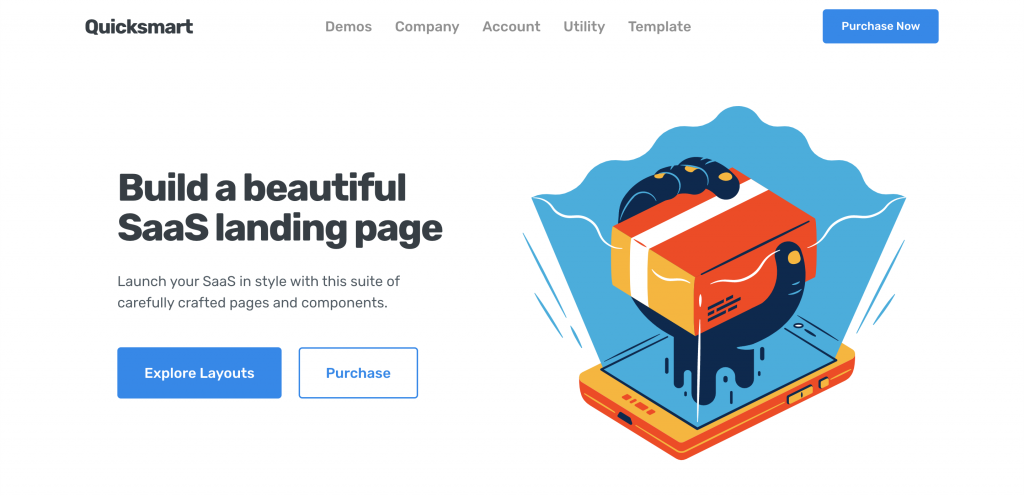Our Top Webflow templates for going multilingual

A blank slate.

For a designer, a blank slate/website is exciting. Developers may have the same feeling—the buzz provoked by a blank page waiting for brackets and commands and perfectly-placed semicolons, to the point that some even describe a “coder’s high” when the workflow gets intense.
But if you’re not a designer or a developer the blank page is probably more intimidating than inviting. Especially if you’re trying to build an online store and handle web design.
Webflow templates sets itself apart from most other free templates or a page builder in that it essentially combines these two types of blank slates: the web design aspect and the coder’s blank page.
But what really sets it apart is its interface, which makes both of these workspaces accessible to users who don’t build responsive websites with HTML5 and CSS, all while giving them the power that creative people like designers and freelancers can unleash in environments of total freedom.
Blank slate or template?
For those who still look at a blank page—even a Webflow CMS one—with apprehension, fear no more: Webflow CMS and a lot of its community members have collectively created a variety of solutions to this problem, in the form of templates.
Webflow templates sit somewhere between the Squarespace template (where everything is determined by the template’s or site’s presets) and the WordPress theme, where anything can be personalized with the right plugin or snippet of code.
We’ve seen that a great attribute of Webflow templates —from a web design, creative professional, or freelancer’s point of view— is its lack of restraints on design and interaction. Templatization, puts some restrictions on the website builder—but also makes building a website easier, by streamlining the process with presets.
This whole idea might seem contrary to the logic of a Webflow template, but it really isn’t. How, you might wonder, does Webflow CMS still run a healthy parallel template economy?
Essentially, it’s all in the architecture: all Webflow templates are built with Webflow CMS, and to use one—whether free or paid—you clone the original directly within Webflow CMS, meaning you can modify any part of the cloned site with total freedom.
While many other site-building platforms, like One Page, require template designers to upload specific file types that may be tough for a non-dev to edit, Webflow themes keep everything in one place. You can use a Webflow template exactly as is, or simply as a layout structure for a highly-personalized website design.
We’ve dug up a few particularly multilingual-friendly Webflow templates for those of you who are eyeing international audiences. These blog templates allow users to organize their text and media flexibly, so that website translation doesn’t tamper with web design elements like spacing. The best news is that all of these Webflow templates are cloneable, which means if you see one you like, you can get it started as the basis of your multilingual Webflow theme x Weglot project.
1. Timber, keeping things simple
Developer: Medium Rare
Price: $79 (USD)
Check it out for yourself here
Timber is more than a blog template. It’s an entire UI kit template, meaning that users can pick and choose from a variety of cloneable elements—as well as pre-made portfolio templates—to use throughout their site as they please.
Again, one of the biggest advantages of cloneable elements is their customizability: the buttons, menu styles, and other features in any UI kit can be styled and adapted to any website design.
The flexibility that UI kits give users is key for multilingual site owners. Being able to adapt button styles and menu formats allows you to take into account the changes in word lengths that might occur when translating to another language; it also opens up further possibilities for styling and integrating your language switcher button into your ecommerce site.


At first glance, the Timber aesthetic seems set in stone. But the examples of Timber elements and page layouts on the Timber site are vehicules for the template’s own branding, and are meant to be reappropriated for other brands. That’s the whole point of a UI kit: think of it as code + clean design waiting to be made your own.
A great multilingual example of Timber in action is Crisp Studio’s, German-English website. One look at their homepage, and you wouldn’t guess that they used Timber as a website template:

They managed to flawlessly incorporate their branding onto a Timber-provided landing page, adding their own CSS and HTML5 and playing around with the layout and interactions to create a crisp homepage.
2. Quicksmart, the startup star
Developer: Medium Rare
Price: $79 (USD)
Check it out for yourself here
The Webflow template store isn’t lacking in startup-oriented UI kit templates: there are 42 website templates alone for the ‘Startup’ tag, compared to 10 for the ‘Beauty’ tag.
Webflow CMS is a startup-friendly tool since they were once themselves a startup. If you’re building a website for a startup, how can you avoid getting overwhelmed by the multitude of website templates?
Standout startup branding: no easy task
The word “startup” no longer exclusively refers to small tech companies: there are startups in every industry today. Despite this diversity, there’s a tendency to adhere to a tech-inspired, ecommerce design standard in all things branding.
Startup branding has become progressively more homogenous, making it more difficult for new startups to distinguish themselves—especially online, where UI kit templates have become the norm and minimalist, uncluttered multi-page sites differ only in content and color schemes.
Perhaps it’s because of Webflow’s own startup-to-standard genesis that its Webflow template team prioritized startup-friendly layouts, or because Webflow’s perfect template marketplace has attracted a lot of designers with a taste for the innovation ecosystem. Either way there’s no shortage of highly-customizable startup templates on Webflow, like Quicksmart.

Quicksmart, like Timber, is a UI kit—meaning it comes with a whole set of cloneable and modifiable features, as well as a full range of multi-page structures waiting to be embellished and emboldened by your brand’s visual identity.
A localizable solution for a globalized market
Since one of the criteria to being considered a startup is generally newness, it’s fair to say that all startups in existence today were created in a global context. Even if not all startups target global markets, they should all be aware that their reach could expand across the planet via nothing more than an HTML5 website or solid ranking in Google.
With that in mind, tailoring a startup site to international audiences is never a bad idea.
The Quicksmart UI kit follows the common codes of startup websites— white space and smooth page interactions— and provides a fluid framework for language-switching, with customizable pre-programmed buttons and a flexible grid layout (which is one of Webflow’s best attributes when it comes to building multilingual sites).

Swedish digital HR-management solutions company Teamvate has taken advantage of Quicksmart’s portfolio templates on their site, organizing their information in ways that avoid spacing problems when switching from English to Swedish, despite the average 30% contraction in character count that this switch entails.


3. Oxy, communicating creatively
Developer: Deni Bozo, Webflow Expert
Price: $79 (USD)
Check it out for yourself here
Oxy presents itself as a template/CMS for agencies and creative people alike, which you can learn more about from their testimonials and FAQs.
What makes Oxy stand out isn’t exclusively its agency-friendly positioning. Rather, it’s high-impact visuals: Oxy allows users to take full advantage of the smooth scroll animations that Webflow.com has become known for.

The Oxy templates animation sequences are applicable to any type of landing page, home page, or pricing page: the key is that they prioritize big visuals, which is a great way of communicating universally. It may not be a particular advantage for multilingual websites, but it works the same for multilingual
What makes Oxy’s parallax animation style particularly well-adapted to multilingual websites is spacing.
Whether you’re into the minimalist trend in web design or not, it’s got one major advantage: lots of space around text areas, meaning that switching between languages doesn’t mess up overall page layout.
Ready, set, clone
Ready to get started on your multilingual Webflow site with something like Elastic themes instead of the One Page builder? Timber, Quicksmart, and Oxy are all available on the Webflow template store, where you can also explore other templates and read testimonials and FAQs.
We’ve also created our own Webflow multilingual website ready to be cloned, similar to Elastic themes! You’ll find 14 language switchers we’ve built for you, to add on your Weglot x Webflow multi language website!
There are some other great ones you might want to Google if you’re in one of these 6 industries and considering building a Webflow site for your business; you’ve also got some ecommerce opportunities in the multilingual Webflow world, and a lot of design freedom when it comes to implementing a language-switcher and multilingual visual strategy.

















